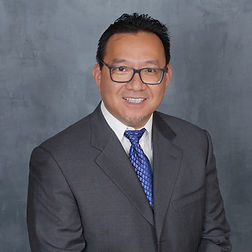MEET THE DOCTOr
_edited.jpg)
ROBERT CHEN, M.D.
Double Board Certified in
Anesthesiology and Pain Medicine
Dr. Chen grew up in the Midwest and attended Washington University in Saint Louis and studied chemistry to learn about the complexities of chemicals and medications. He studied the effects of sepsis on energy molecules in animal models with doctors from the school of medicine and department of chemistry. He pursued a degree in medicine at the Penn State College of Medicine and attended residency at John's Hopkins Hospital in anesthesiology and critical care. Following residency, he completed a fellowship in Pain Medicine at the University of Pennsylvania. He is double board certified by the American Board of Anesthesiology (ABA) in Anesthesiology and in Pain Medicine.
Dr. Chen has had over 24 years of experience and takes a multifaceted approach to identifying the root cause of a patients medical problems and attempts to provide a realistic solutions given the limitations or resources available. He realizes that there are many challenges to medicine today and strives to be a patient advocate with the goals improving their activities of daily living as well as their quality of life.
WHY CHOOSE A BOARD CERTIFIED PHYSICIAN?
There are currently two different types of doctors that are licensed to practice medicine: medical doctors, “M.D.s,” and doctors of osteopathy, “D.O.s.” Both are fully licensed to treat patients, prescribe medication, and perform surgery. The two are very similar, with individuals in both paths completing 4 years of undergraduate school, four years of medical training, as well as higher medical education designed to prepare them for their future medical specialty. However, there are a couple of features that differentiate D.O.s from M.D.s. In their medical training, a D.O. receives extra training in physical manipulation, and maintains a “hands-on” approach to the body and patient treatment. An osteopathic doctor will attempt to treat the entire body, and utilize osteopathic manipulative treatment (OMT), to ensure that the body’s natural healing processes are working properly. Both kinds of physicians use similar techniques and medical practices to treat patients.
After graduating from medical school, the new doctors spend anywhere from three to eight years in a “residency” program, where they will receive extensive training of a specific area of medicine in which they wish to practice. After completion of the program, and passing general certification testing, they are then fully licensed to practice medicine. After this, many physicians continue their education, going through a fellowship program to develop skills, and obtain “board certification.” Both of which will ultimately allow the doctor to provide better care to their patients. Fellowship programs usually last one to two years and provide advanced training in an area of medicine more specific than the initial medical residency. The doctor may then receive board certification, indicating that the individual has gone “above and beyond” the basic medical requirements, and is allowed to practice without direct supervision in the specific medical field.
In the United States, medical board certification is not mandatory, and a physician may practice without certification in their specialty. Basic medical licensure ensures that all doctors meet fundamental requirements to ensure patient safety and standards of treatment, but are not specific for each specialty. Board certification indicates a doctor’s expertise in a specialty or sub-specialty of medicine. To be board certified, a physician must go through extensive peer evaluation by doctors already certified in the field, and testing to ensure the skills and practices continue to be exceptional. While any doctor will provide treatment for a wide range of medical conditions, a board certified doctor is dedicated to providing outstanding patient care through rigorous voluntary advanced education opportunities. A board certified specialist is an expert in medical science in his or her specialty as well as patient safety and quality healthcare. The physician must learn about new technologies, continue to participate in professional development programs, and maintain certification through continuing education.
A physician may hold board certifications in multiple areas of medicine. There are many areas of medicine that overlap and a doctor that is “double board certified,” has received training in two separate specialties that work synergistically to provide the highest level of patient care. For example a physician may receive board certification in anesthesiology, and subsequently receive additional training and certification in pain management. A medical provider that holds double board certification demonstrates that they are experts in multiple fields, and will utilize their advanced training in combination to address specific medical issues, resulting in a exceptionally advanced level of patient care.
The path to becoming a physician is rigorous and requires dedication, tenacity, and time. However, even with similar medical education, there are dramatic differences in the quality of care that is provided by different doctors. It is important to know about your personal physician and his background. You can do this by researching your doctor and his board certification status, his rating on websites and publications, as well as reviews from their patients. It is ultimately your decision who you chose for treatment, and it is important to be an educated patient, and visit a doctor that you know will provide the highest level of care possible.
